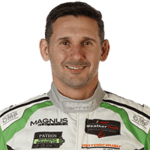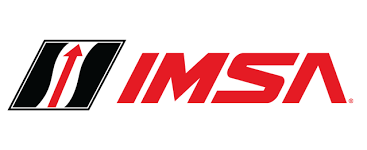Racing Simulator Manufacturer Reports Clients with 75 wins, 151 Podiums, and 7 Championships
Like all things in 2020, racing at the track has been different. With the season delayed and race weekends rearranged, teams have had the added work of navigating a much different schedule than usual. Routine is not always easy to maintain, but for many competitors, training and development is one constant in the day to day life of a race car driver. When the pandemic hit in March, at the track racing stopped and simulated racing at home surged. Demand for racing simulation equipment was way up and subscriptions to online racing services such as iRacing.com (https://www.iracing.com) accelerated faster than ever. Many drivers had already taken up simulation as a vital component in their track preparation and their own driver development, and sometimes results can speak for themselves.
SimCraft, a racing simulation equipment manufacturer outside Atlanta, GA was not only among the companies that benefitted from the sudden desire to race at home, but has just reported astonishing results of their clients that also compete on track.
75 Race Wins, 151 Race Podiums, and 7 Series Championships in 2020
And that’s just for the various clients in sports car racing covering IMSA, WEC, SRO, Trans-Am, AER, Ferrari Challenge, and Super Trofeo. When you add in IndyCar, NASCAR, and Late Model Racing the numbers jump to 91 race wins, and 187 Podiums. These kinds of results beg the questions, how is this even possible, and why are users of SimCraft equipment getting results at the track?
The first question might be easy to answer when you consider how long SimCraft has made racing simulators. Since around 2009, competitors across all the various forms of motorsport have adopted simulation as a training tool. SimCraft is among the first companies to manufacturer and install equipment and therefore have had adopters for over a decade. That might speak to why the number of users of SimCraft equipment is high, and when taken across so many different series, they are bound to see results such as these in aggregate. They’ve been around long enough to build the client base. That client base has used simulation for years for development and preparation, and perhaps it’s attributable to just that. But the more interesting question might be why their clients see results at the track.
The answer to this question it seems might lie in the philosophical approach of who SimCraft targets with their products. Hint: It’s the drivers stupid.
Although SimRacing is a niche category in the video gaming industry, SimCraft claims that’s not really what they do or the audience they cater to.
“We have made the focus of our racing simulation equipment around the competitor.” says Sean Patrick MacDonald, Co-Founder and CTO of SimCraft. “A fast simracer can beat you with the most basic of equipment because they have spent years practicing on that equipment. For us, the competitors who actually race on track are the ones we have been listening to for all these years to refine and development our product and technology. Our core competency is building a racing simulator where the driver of the sim can feel the weight transfer of the car, and the limit of adhesion through yaw motion, and for our clients who compete on track, that time spent in the sim gives them a better understanding of what their race car can do at speed.”
Well known and respected driver Ben Keating, who you can find in many sportscar paddocks, supports this concept through his results directly. “This is my first season in the World Endurance Championship. The first 4 races of the season were England, Japan, China, and Bahrain. I had never been to any of these tracks before. Halfway through the season, we were leading the GT-AM championship. A HUGE portion of this is credited to my SimCraft.”
To go one step further, learning a track in the sim is just the first step, which any sim can accomplish. It’s the follow on examples that Keating mentions that might start to explain the difference.
“I knew how many times to downshift before a corner without needing to look down at my dash. I knew my brake points and turn in points. I knew how much of the curb I could use and how much I couldn’t, and what that curb would feel like when and how I hit it.”
“Sure competing online is incredibly fun, but a real racing driver needs to be able to climb into a sim and get to work immediately, not learn how to drive the sim first. I believe they should be one and the same.”





















